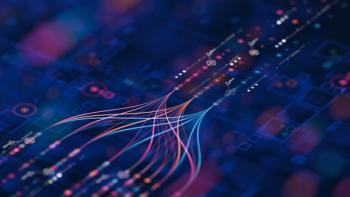
Investing in computed radiography
Neel Veterinary Hospital in Oklahoma City, a paperless practice, prides itself on using the latest technology. "Adding computed radiography was a natural step in our practice evolution," says co-owner Dr. Tina Neel.
Neel Veterinary Hospital in Oklahoma City, a paperless practice, prides itself on using the latest technology. "Adding computed radiography was a natural step in our practice evolution," says co-owner Dr. Tina Neel.
First, the hospital team compared the cost of purchasing and maintaining the digital system with the savings from eliminating monthly automatic processor maintenance fees and the purchase of film and associated labeling and storage supplies. "The number of re-takes associated with processing dropped considerably, saving time and minimizing exposure to radiation and chemicals used in conventional developing," she says. And they regained space when they stopped storing conventional film.
The system initially cost about $50,000, including cassettes. Now, the hospital pays around $995 per quarter for a middle-tier extended maintenance agreement option that provides unlimited 24-hour support, cassette replacement, and upgrades. They save $8,000 to $9,000 per year in fees for purchasing and processing conventional film. They average six radiographic cases per day from current clients, emergency cases, and referrals. Gross income from radiography rose 60 percent in the first 12 months; the practice recouped the cost of the unit in the first year.
"When we installed the unit, we changed our fee structure to include two views for each patient with the initial radiograph fee," says Dr. Neel. "The fee's slightly less than two films with our old system, and we believe it improves the quality of care and minimizes risk of misdiagnosis."
The hospital relies on the same radiography equipment and computer system, so going digital didn't require much additional training. One change: There's no chemical developing. "The cassettes come loaded with phosphorus plates, which makes taking and developing radiographs much less complicated," Dr. Neel says. "It's easier to teach a new employee to process the image, too."
Other benefits: the ability to see greater detail and manipulate images and transmit images electronically to specialists, and remote system access for conferencing with clients and specialists. The practice has also added wireless tablet PCs that allow them to show waiting clients images while family members are visiting the ICU. "Clients understand the situation better when presented with high-tech educational tools and feel more comfortable about the level of care their pets are receiving," says Dr. Neel. "After using the equipment for two years, I cannot stress how valuable the technology is in the eyes of concerned owners."
Newsletter
From exam room tips to practice management insights, get trusted veterinary news delivered straight to your inbox—subscribe to dvm360.




